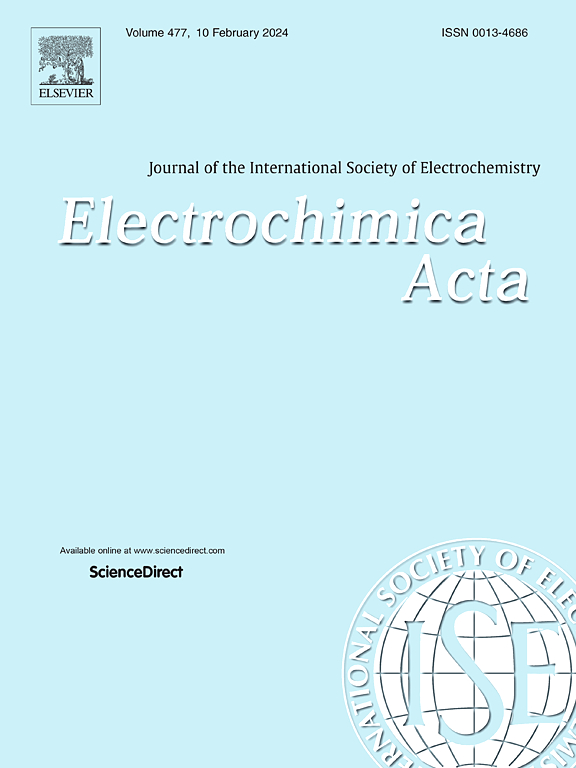Synergistic enhancement of porosity and conductivity in microporous layer via fluorinated CNT for PEMFC applications
IF 5.5
3区 材料科学
Q1 ELECTROCHEMISTRY
引用次数: 0
Abstract
This study presents the development of a superhydrophobic fluorinated carbon nanotube (F-CNT) material via chemical grafting of 1H, 1H, 2H, 2H-perfluorodecyltriethoxysilane (PFDTES) onto carbonylated carbon nanotube (CNT). The F-CNT were composited with XC-72 carbon black (CB) to fabricate a novel microporous layer (MPL) for proton exchange membrane fuel cell (PEMFC). The effects of PFDTES modification on the surface chemistry, crystal structure, hydrophobicity, and morphology of F-CNT were systematically characterized. F-CNT@CB-based MPL exhibited increased porosity (72.6%), a high fraction of macropores (25–45 μm), and a significant improvement in surface hydrophobicity, with the water contact angle increasing from 139° to 160°, while the in-plane electrical resistivity was reduced to 7.1 mΩ·cm. Under 80% and 100% relative humidity, the PEMFC assembled with F-CNT@CB demonstrated the highest limiting current densities (1.35 and 1.29 A/cm²) and peak power densities (473 and 427 mW/cm²), alongside the lowest mass transport impedance among all tested samples. These results confirm that the incorporation of F-CNT effectively enhances water and gas management within MPL, significantly improving PEMFC performance under humid operating conditions. This work offers a promising approach for designing high-performance, humidity-tolerant fuel cell electrode structures.利用氟化碳纳米管协同增强微孔层的孔隙度和导电性
本研究通过将1H, 1H, 2H, 2H-全氟癸基三乙氧基硅烷(PFDTES)化学接枝到羰基化碳纳米管(CNT)上,制备了一种超疏水氟化碳纳米管(F-CNT)材料。将F-CNT与XC-72炭黑(CB)复合,制备了质子交换膜燃料电池(PEMFC)的新型微孔层(MPL)。系统表征了PFDTES改性对F-CNT表面化学、晶体结构、疏水性和形貌的影响。F-CNT@CB-based MPL的孔隙度增加(72.6%),大孔隙(25-45 μm)比例增加,表面疏水性显著提高,水接触角从139°增加到160°,面内电阻率降至7.1 mΩ·cm。在80%和100%相对湿度下,用F-CNT@CB组装的PEMFC显示出最高的极限电流密度(1.35和1.29 A/cm²)和峰值功率密度(473和427 mW/cm²),以及所有测试样品中最低的质量传输阻抗。这些结果证实,F-CNT的加入有效地增强了MPL内的水和气体管理,显著提高了PEMFC在潮湿操作条件下的性能。这项工作为设计高性能、耐湿的燃料电池电极结构提供了一种有前途的方法。
本文章由计算机程序翻译,如有差异,请以英文原文为准。
求助全文
约1分钟内获得全文
求助全文
来源期刊

Electrochimica Acta
工程技术-电化学
CiteScore
11.30
自引率
6.10%
发文量
1634
审稿时长
41 days
期刊介绍:
Electrochimica Acta is an international journal. It is intended for the publication of both original work and reviews in the field of electrochemistry. Electrochemistry should be interpreted to mean any of the research fields covered by the Divisions of the International Society of Electrochemistry listed below, as well as emerging scientific domains covered by ISE New Topics Committee.
 求助内容:
求助内容: 应助结果提醒方式:
应助结果提醒方式:


